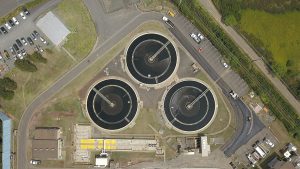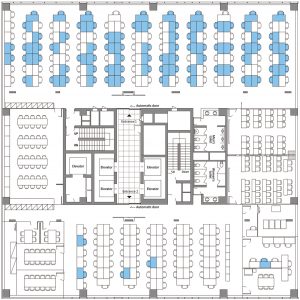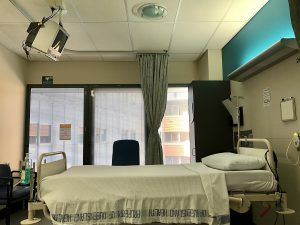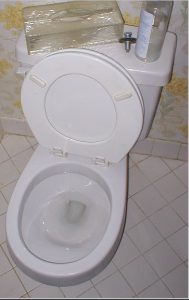Wastewater detection for SARS-CoV-2 seems to be a hot topic these days (full disclosure, we recently submitted a grant recently to jump on this same bandwagon). This study “Temporal detection and phylogenetic assessment of SARS-CoV-2 in municipal wastewater” took place in Montana (USA). This study goes a bit further than the previous one by genome …
This one only marginally qualifies under Microbiology of the Built Environment since it’s almost purely an epidemiology study and only touches on the issues of occupant density and movement in the building. The study is “Coronavirus Disease Outbreak in Call Center, South Korea“. But it’s pretty clear in this paper how much close contact matters, …
(h/t to Linsey Marr for posting about this on Twitter) Sometimes I have to double check to make sure I don’t post about the same article twice. I posted recently about an article describing transmission in a restaurant in Guangzhou, China. This new article, “Evidence for probable aerosol transmission of SARS-CoV-2 in a poorly ventilated …
(h/t to Linsey Marr for posting this on Twitter) Another, more comprehensive, environmental sampling survey for SARS-CoV-2 from a hospital… this time in Wuhan, China. “Aerosol and Surface Distribution of Severe Acute Respiratory Syndrome Coronavirus 2 in Hospital Wards, Wuhan, China, 2020“. The authors here did air as well as surface sampling. Again, only RNA …
So this concept of doing wastewater surveillance for SARS-CoV-2 is gaining more and more traction. We posted recently about some work from MIT showing that wastewater titers of the virus are quite a bit higher than might be expected from the clinical data we have. I know some of the folks here at UC Davis …
Given all the media attention this ship got, I think this is a really interesting article; “Transmission routes of Covid-19 virus in the Diamond Princess Cruise ship“. The assumption among many folks is that there might have been airborne transmission between staterooms on the ship, considering the number of people that were infected. This article …
(h/t to Patrick Horve for this article) Definitely seeing a theme here these days. People are swabbing hospitals and finding the SARS-CoV-2 virus pretty much all over the place. This article “Detection of Air and Surface Contamination by Severe Acute Respiratory Syndrome Coronavirus 2 (SARS-CoV-2) in Hospital Rooms of Infected Patients” fits perfectly in that …
Not a pre-print this time but a (presumably) peer-reviewed article about the susceptibility of domesticated animals to SARS-CoV-2. The authors looked at dogs, cats, ferrets, pigs, ducks, and chickens. Basically the virus can infect ferrets and cats pretty well and that with cats, they can potentially get the virus from other cats. Not clear yet …
(h/t to Rich Corsi and Paula Olsiewski for sharing this article on Twitter) I have to admit, while this article falls squarely within our remit of the Microbiology of the Built Environment, it seems a little bit in the obvious category. This is a preprint looking at data from hundreds of SARS-CoV-2 outbreaks in China …
Another short #COVID19 Preprint with relevance to the built environment came out yesterday. This one from a hospital in Nanjing, China where they collected 107 samples from the air and various surfaces. Most of those were negative (RT qPCR as usual) but most of the positives were found in the bathroom. Abstract below: Abstract …







